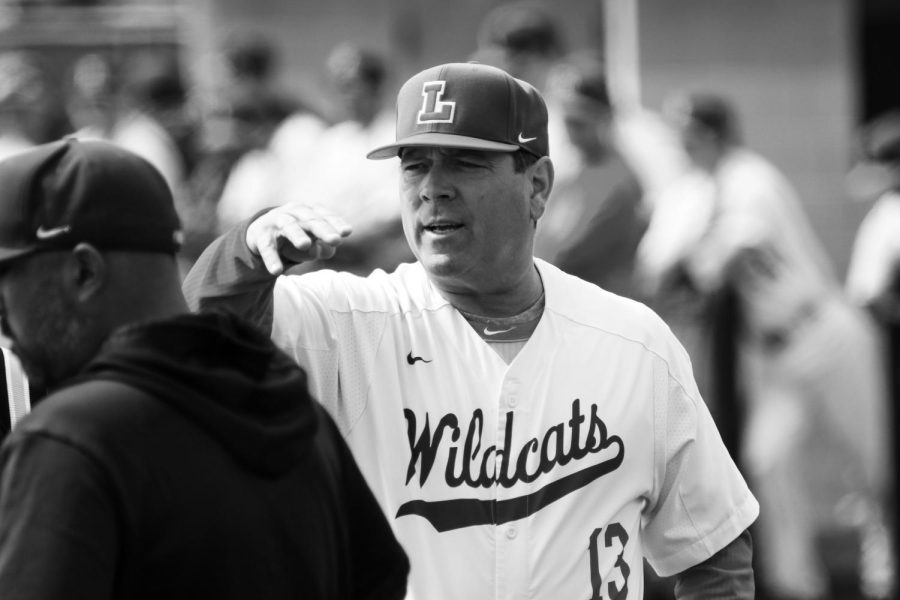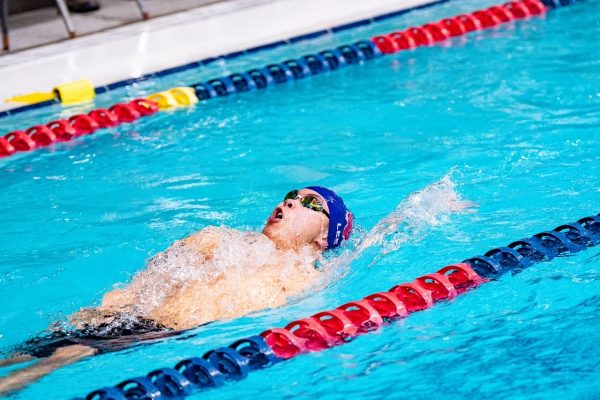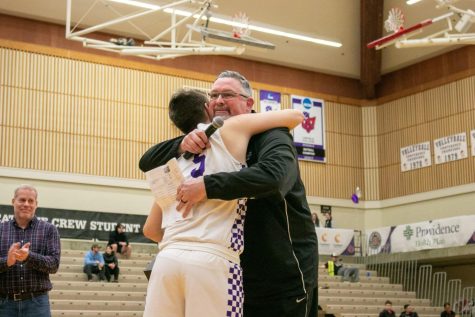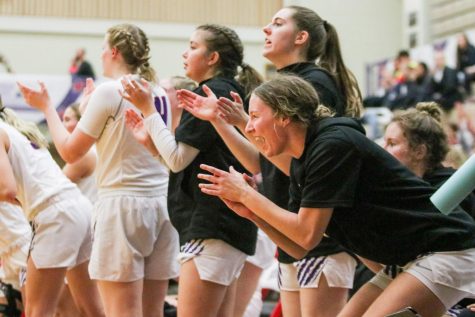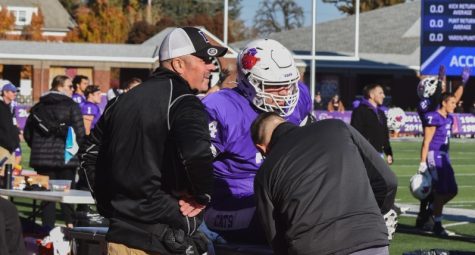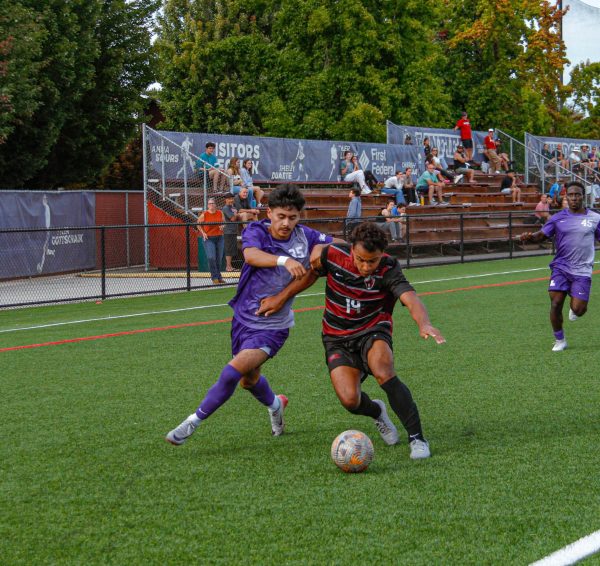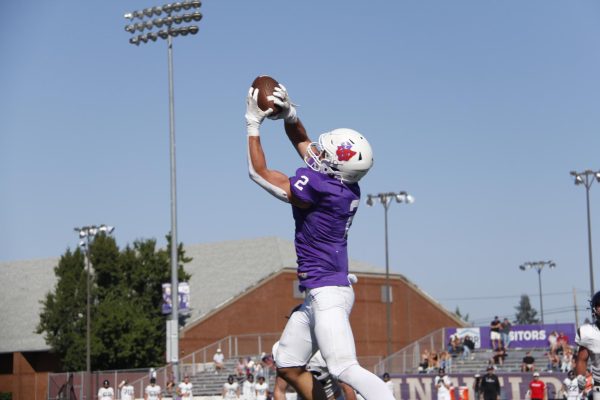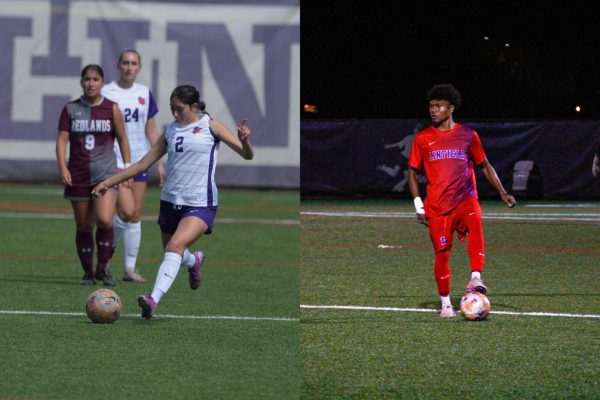Coaching kids to be more than just athletes
Roaming the neighborhood looking for friends to start a game of kickball or rounding up a group to play basketball was how kids used to develop their love of sports—and improve their skills.
Unfortunately, this freedom to create fun with other kids—and informally practice sports—just isn’t the same anymore. Having five-year-old kids wandering the streets isn’t seen as safe as it was less than 50 years ago. Instead, parents today enroll their five-year-olds in basketball, track, tennis—you name it. They feel the need to start their children’s future before the kids can even decide what they want to pursue for themselves.
“We were just kids in the park,” Dan Spencer said. “Tennis, football, baseball—it was all kid-driven.”
The current Linfield baseball coach is only 57 years old, but the way he was raised is vastly different from the upbringing of his current players. Spencer’s earliest memories of baseball began with the older kids in the neighborhood organizing games for the younger ones. They would teach Spencer and his friends how to bat and throw and explain to them the structure of the game. No coaches, no parents, just kids gaining joy from playing sports together.
Linfield Athletic Training Program Director Laura Kenow (56) grew up in a similar way to Spencer. Even though Kenow spent her childhood in Owatonna, Minn., and Spencer spent his in Vancouver, Wash., the two experienced the same type of summers—being sent outside in the mornings after eating a bowl of cold cereal and milk and not returning home until the street lights turned on.
“Nobody worried about anybody being taken off the street or getting kidnapped or bad things happening to people,” Kenow said. “You just had that freedom to go organize these free play things with kids in the neighborhood with very little parental supervision. Because of the way society has developed over time, kids don’t really have that luxury now because there’s a lot more risks and dangers in the world than there used to be.”
While Spencer and Kenow were raised in the late 1960s and early 1970s, Britta Wyatt has a similar philosophy when it comes to youth sports, despite being more than 15 years younger than Spencer and Kenow.
Wyatt has been a swim coach for almost 22 years and is only 38 years old. Although Wyatt grew up close to two decades later than Spencer and Kenow, she still had some of the same responsibilities and independence that they had growing up.
“I swam through about the age of 16, made it to junior nationals and then stopped pretty quickly after that,” Wyatt said. “I basically had to get a job and put myself through life, so I couldn’t swim at that point and had to be done.”
Spencer, Kenow and Wyatt have all been on both sides of the sports world—as athletes and as coaches—and their perspectives on effective coaching techniques have developed as they’ve learned more from their various experiences as coaches.
Coaching techniques for bringing athletes to a higher level of excellence have developed over the years, and new styles of training have overruled the old-school ways, but do the old-school techniques still work in making these athletes better at the sports they do?
“There’s a push to professionalize sport at younger and younger ages,” Kenow said. “There’s a lot of stress and anxiety that kids perceive to be placed on them because they want to please their parents, and they perceive that it’s important to their parents.”
“The parents are living vicariously through their kids and so there becomes an increase in pressure,” Kenow added. “The seasons get longer. The demands on the kids get longer. They burn out earlier because it’s not just random play that’s self-organized. Are they intrinsically motivated to do it? Are they doing it because they love it? Or are they doing it because the schedule says they have to go play this practice or this game today?”
Playing sports from a young age just wasn’t the same as it is today. Sure, kids played games during PE or recess, but the only attempted structure or organization came from a teacher trying to give the kids directions or from the other kids on the playground.
Title IX wasn’t passed until Kenow was about six years old, so having equal opportunity for girls to participate in organized sports was brand-new during Kenow’s childhood.
Throughout high school, Kenow played softball, basketball and tennis, but decided to focus on softball and basketball through college. Playing three sports in high school and two in college seems like an excessive amount today, but Kenow said sports back then just weren’t as demanding as they are now.
“Women’s athletics were still growing, and so it wasn’t an abnormality for people to play two sports in college,” Kenow said. “I just loved participating in sports and wanted to continue at the collegiate level with both because you didn’t have that issue of overlapping seasons as much as you do now.”
Spencer has noticed a shift over time with players’ mentalities. More athletes used to have a higher standard of excellence than they do now. Athletes of the past seemed to have a higher expectation of performance than they do now, and Spencer credits a majority of this to evolving parenting techniques.
“It’s a different deal now,” Spencer said. “Some of these kids have never had anybody ever raise their voice to them.”
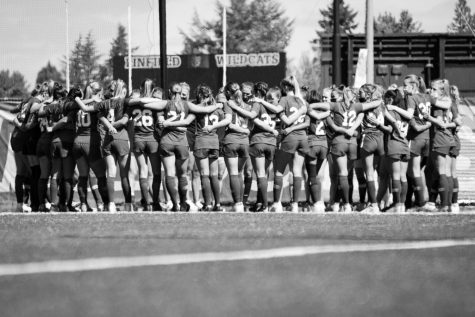
After coaching 10-and-under swimmers for over 20 years, Wyatt has worked with many different parents who all have their own parenting philosophies. From parents who drop their kids off outside the pool and never even meet the coach to parents who attempt to coach their kids on deck, Wyatt has seen it all.
“The focus for parenting grows more and more to be less focused on doing things at a high level,” Wyatt said. “If the parenting philosophy is not focused on achievement, instead it’s more focused on well-rounded kids. You have kids that can bounce back and forth a lot. That type of style of parenting where you go purely based on the moment, there’s less commitment involved with that.”
While one parenting style isn’t necessarily better than another, coaches do have an easier time communicating with some types of parents than others. The parents who show interest in their children’s activities but give the coach space to actually coach their kids are the easiest for coaches to work with.
While Wyatt has experienced organized youth sports as both an athlete and a coach, Spencer and Kenow have also noticed the shift in parenting techniques that affect the coachability of athletes. Parents spend more time focusing on the external factors that motivate their kids to continue their sport instead of the internal factors that keep athletes engaged in the sport they’re doing as a whole.
“Some of it still is intrinsic,” Kenow said. “But what we’re seeing in some of the research is that kids are starting to become more extrinsically driven to do these things. They’re burning out of their sports at younger ages. They’re just dropping out completely. We’re seeing an increased number of overuse injuries in kids at younger and younger ages. It’s not a good trend.”
Parents do play a part in the success of their kids and the ability their kids have to reach their athletic goals, but the parents aren’t the ones writing the practices. Coaches have control over what their athletes do, to a certain extent.
Wyatt’s coaching style has shifted, adapted and reverted over her years as a youth swim coach, but she believes that all of her coaching strategies have benefited her athletes and prepared them for the next stage in their athletic career.
Since the swimmers Wyatt trains are usually just starting the sport, she experiences various levels of attentional, physical and emotional ability within her groups. Because of this, Wyatt is challenged with the need to push the more advanced kids while maintaining the love of the sport with the ones who aren’t as internally motivated.
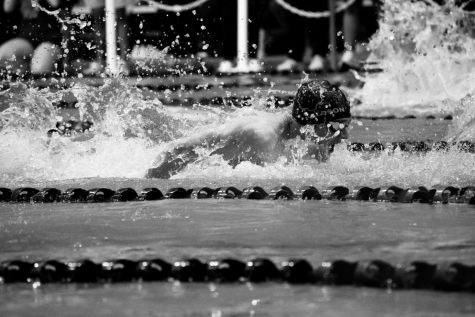
“I have a pretty good handle on where parents are at now versus maybe 10 years ago,” Wyatt said. “We’re kind of on the cusp of things evolving again. Parents seem to be trying to address the lack of commitment or work ethic that we’re seeing with kids. Parents are kind of going the other direction where it’s becoming a little bit more intense than it was.”
Additionally, Wyatt adapts her training to the coaching style of the next group up, as a way of preparing her athletes for the next step.
Why do coaches yell at their athletes? Some might think it motivates them to work harder, others might think the yelling scares their athletes into doing what they ask them to do. But does this really help them grow into better overall individuals?
Spencer feels like losing his temper around select athletes can motivate them, but he knows which athletes will respond well to that form of coaching and which ones will not respond positively to yelling. However, when addressing a group, Spencer refrains from raising his temper. Spencer even knows when to keep his thoughts to himself and only share a select few words with his team.
“Now, kids are different,” Spencer said. “But that doesn’t mean that we have to change our standards or change our expectations. It just means sometimes we have to change our message and how we’re going to get across.”
From another perspective, Kenow believes that yelling is rarely constructive feedback for athletes and that explaining gets through to the athlete much better. Coaching means teaching individuals a skill and helping them to master it.
“You’re just trying to teach somebody how to do a sports skill rather than how to solve a math problem,” Kenow said. “How frequently do we consider it to be a good educational practice to yell at a kid who can’t solve a multiplication table? That’s not going to help them conquer it.”
Raising one’s voice in a coaching setting can help some athletes feel motivated at the time, but this doesn’t translate to improving their athletic skills in the long run. Screaming at a basketball player to make their free throws doesn’t help their shooting percentage—but taking the time to correct their form will be effective over time.
However, not all tough training has been determined as unproductive. Wyatt has seen a shift in work ethic throughout her coaching career and believes she must adjust her training plans accordingly. More athletes used to understand the discipline of training at a higher level, but fewer athletes have that same level of dedication today.
“More kids are on the spectrum now, and more kids that are dealing with ADHD,” Wyatt said. “I would say that I have a pretty strong foundation from my education that has helped a lot. Although things are changing so fast now that I’m sure a lot of what I learned is not quite the same anymore.”
Wyatt sees the waves of higher levels of dedication and understanding of the sport mixed with kids having a lower attention span rotate more and more frequently. She credits this fast-paced turnover partially to social media and partially to the variety of parenting techniques.
While not all athletes are at the same physical, mental and emotional level when it comes to their sport, coaches have realized that that’s okay. Every athlete improves at their own rate, and coaches today are more willing to work alongside their athletes in reaching those goals. Some athletes’ achievable goals are winning a gold medal at the Olympics while other athletes’ goals are making it to practice on time. The actual goal isn’t what matters, but rather how the athlete plans to achieve that goal.
Spencer believes that some athletes just naturally have that “it” factor. That drive to push themselves until they can’t take another step forward without their legs giving out. That hunger to be better than the person next to them and become a better version of themselves through the process.
Kenow trusts that every athlete learns something through their sport. Whether this be a new technique to make them better at what they do, learning discipline through having to show up for their team or simply gaining an understanding of a structured practice, all athletes are just normal people who happen to sign up for a sport of their choice.
Wyatt works with her athletes in a way that individualizes their needs and creates a path for them to succeed. While this might look different from year to year and from athlete to athlete, Wyatt understands that not all athletes need the same attention, but they do need a sense of understanding from their coach.
Coaches walk a fine line of pushing their athletes to their potential and pushing athletes away from their sport, but over the years, individuals like Spencer, Kenow and Wyatt have come closer to leading their athletes toward their goals without pushing them right past them.
When Spencer and Kenow discovered their sports over 50 years ago, coaches didn’t understand the individual needs of their athletes the way they do today. However, coaches like Spencer and Wyatt are teaching the up-and-coming generations of coaches ways to push their athletes to be better, more well-rounded individuals.
Athletes aren’t defined by the sport they do. They’re defined by how they go about not only their sport but also the other aspects of their lives. Coaches have the job of leading them away from investing their entire life in their sport and instead guiding them to use what they learn in the athletic classroom and apply it to every aspect of their lives.

